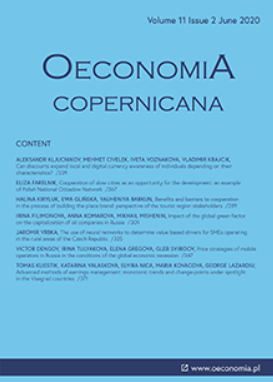The use of neural networks to determine value based drivers for SMEs operating in the rural areas of the Czech Republic
The use of neural networks to determine value based drivers for SMEs operating in the rural areas of the Czech Republic
Author(s): Jaromir VrbkaSubject(s): Business Economy / Management, Rural and urban sociology, Accounting - Business Administration, Human Resources in Economy, Transport / Logistics
Published by: Instytut Badań Gospodarczych
Keywords: business value drivers; value based drivers; small and medium-sized enterprises; rural area; ultimate goal, economic value added; neural networks;
Summary/Abstract: Research background: In the past, the main objective of a company was to generate sufficient profit. Nowadays, a company must seek to achieve much broader objectives. To be successful in this pursuit, it must not only measure financial performance, but also monitor internal and external developments, increase shareholders’ wealth and protect the interests of other stakeholders, i.e. to analyze and act on those factors that affect company value. Purpose of the article: The objective of the contribution is to determine through the use of artificial neural networks the relationship between business value drivers, or value based drivers (VBD), and EVA Equity, which is economic value added (EVA), of small and medium-sized enterprises operating in the rural areas of the Czech Republic. Methods: The data was obtained from the Bisnode´s Albertina database. The data set consists of the profit and loss accounts for 2013 to 2017 of small and medium-sized enterprises operating in rural areas of the Czech Republic. Two scenarios are analyzed. In the first, the independent variables are only the value drivers, whereas in the second, company location (region) is included. The objective is to find the dependence of EVA Equity on individual VBD and company location. A sensitivity analysis is conducted, on the basis of which the importance of individual value drivers and company location is determined. Findings & Value added: The output is a set of value drivers, which could be used by company managers to regulate the growth of EVA Equity, i.e. value for shareholders. The findings reveal that the difference between successful and unsuccessful companies is determined by the level of involvement of human capital; companies use a large number of substitutes for factors of production, whereby the involvement of borrowed capital is likely to cause a positive financial leverage effect.
Journal: Oeconomia Copernicana
- Issue Year: 11/2020
- Issue No: 2
- Page Range: 325-346
- Page Count: 22
- Language: English

